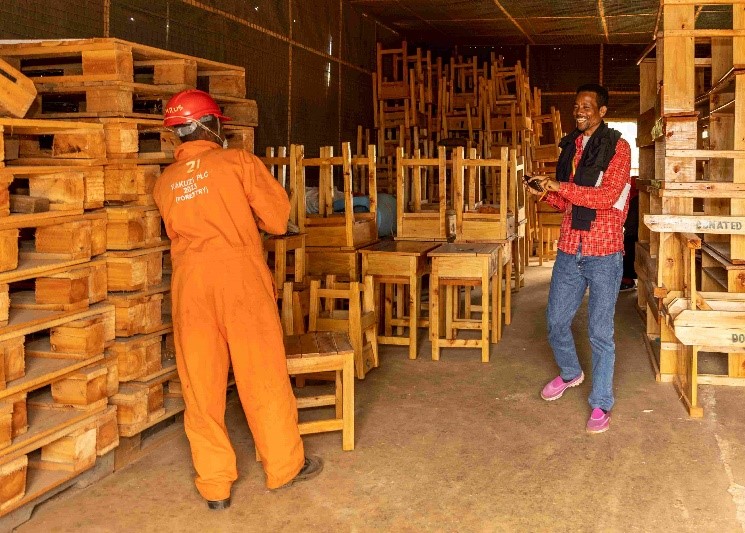Forests are critical to human, animal, and plant survival on this planet, yet we are rarely conscious of them in our day-to-day lives; we take them for granted. For example, the air we breathe, the water we drink, the rains for our crops, the pollinators for our crops, and the good climate we enjoy are all secured by forests.
Africa is very rich in forest resources and other forms of tree cover. The 2020 Global Forest Resources Assessment Report prepared by the Food and Agriculture Organisation of the United Nations (FAO) reports that Africa has 637 million hectares under forests: about 16% of the global forest area, and 23% of the land area of the continent. Further, Africa has 446 million hectares classified as “other wooded land” that make up 31% of the global wooded lands.
Combining the ‘forests’ and ‘other wooded land’ gives Africa a tree cover almost the size of Europe; and this does not include agroforests and urban forests. This is the tree cover that Africa has made available to the global community to sequester carbon dioxide freely.
The different forest types on the continent that AFF will work in can be categorized as:
- Forests and woodlandscover vast areas of Africa, representing a substantial percentage of global forest cover. Tropical moist forests in Central and parts of West Africa and woodlands in Southern Africa are the dominant formations. The Democratic Republic of Congo, Sudan, Angola, Zambia, and Mozambique contain the majority of Africa’s forest areas.
- Montane forestsare found around mountains and highlands in Eastern Africa and are ecologically and hydrologically vitally important.
- Mangrove forestsalong the African coast, and riverine forests along water courses, are also part of the natural forest formations in Africa.
- Man-made plantationscover only limited parts of Africa’s total forest area, with South Africa, Sudan, Nigeria and Morocco contributing substantially to this kind of forest cover. Large scale commercial forest operations are found in the plantation-based forest industry in the South, and in the concession-based timber extraction and saw milling industry in Central and West Africa. Small quantities of plantation, farm and naturally grown timber constitute the basis for small scale forest industry across the continent.
- Other wooded land: Africa also has hundreds of millions of hectares under this category. They include the widespread savannas of Eastern Africa and the extensive Sudano-Sahelian region. Together with the fertile highlands of Eastern and Southern Africa, these are the same agroecological zones where much of Africa’s agriculture, human and animal population concentrations are found.
Africa’s share of the global value of wood removals remains significantly lower than its potential. Firewood and charcoal are by far the most significant components of these removals, but furniture produced by cottage industry, local construction material, woodcraft, utility goods, and a variety of non-wood products including fruits, medicines, fodder and honey also originate from various forest types. There is a growing volume of timber traded directly from farms and community managed forests to the primary forest industry, creating links between the informal and formal sectors.

More than half a million people in Africa are involved in the primary production of goods in forests. Employment varies considerably, and there is a scarcity of information on this issue. A significant proportion of wood production and processing takes place in the informal sector and has not been adequately studied.
Deforestation and degradation are accelerating at alarming rates in many parts of Africa, mainly caused by the transfer of forest land into agriculture and other uses. Some deforestation can also be attributed to the non-sustainable exploitation of wood for fuel, timber and other products, leading to a situation where forest management and utilisation are increasingly seen as causing negative impacts on forest-dependent people, climate, biodiversity and water. The enormous economic, food security and environmental benefits to be derived from an increasing and sustainably managed forest and tree estate are underestimated, often as a result of inadequate information and lack of appreciation of the potential value of well managed trees and forests.
The problems afflicting the forestry sector derive partially from national forest institutions which, with some notable exceptions, are weak and have limited influence on policy and investment decisions. Likewise, forest expertise is weak in most regional and sub-regional institutions which are increasingly shaping the development agenda. While social and ecological issues and economic opportunities associated with forest and tree management are increasingly important for Africa, the international discourse has often leaned towards discussion of environmental problems linked to the management of Africa’s natural resources.
In the last several decades much has been lost to deforestation and degradation prompting numerous policy, legislative, and institutional reforms as well as initiatives, programs, and projects. Effective management and use of Africa’s forests is a priority to public as well as private actors but there has been limited success in analysing lessons in a systematic and unbiased way to support these efforts.
Why we exist
Given this background, AFF exists to voice the concerns of African forestry stakeholders, and to use science, indigenous knowledge, and experience to advocate for the increasing relevance of forests and trees outside forests to peoples’ livelihoods, national economies and the stability of the environment.

